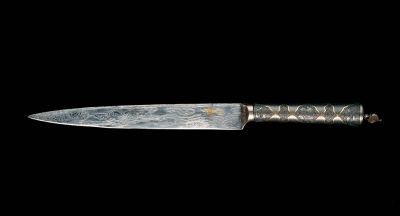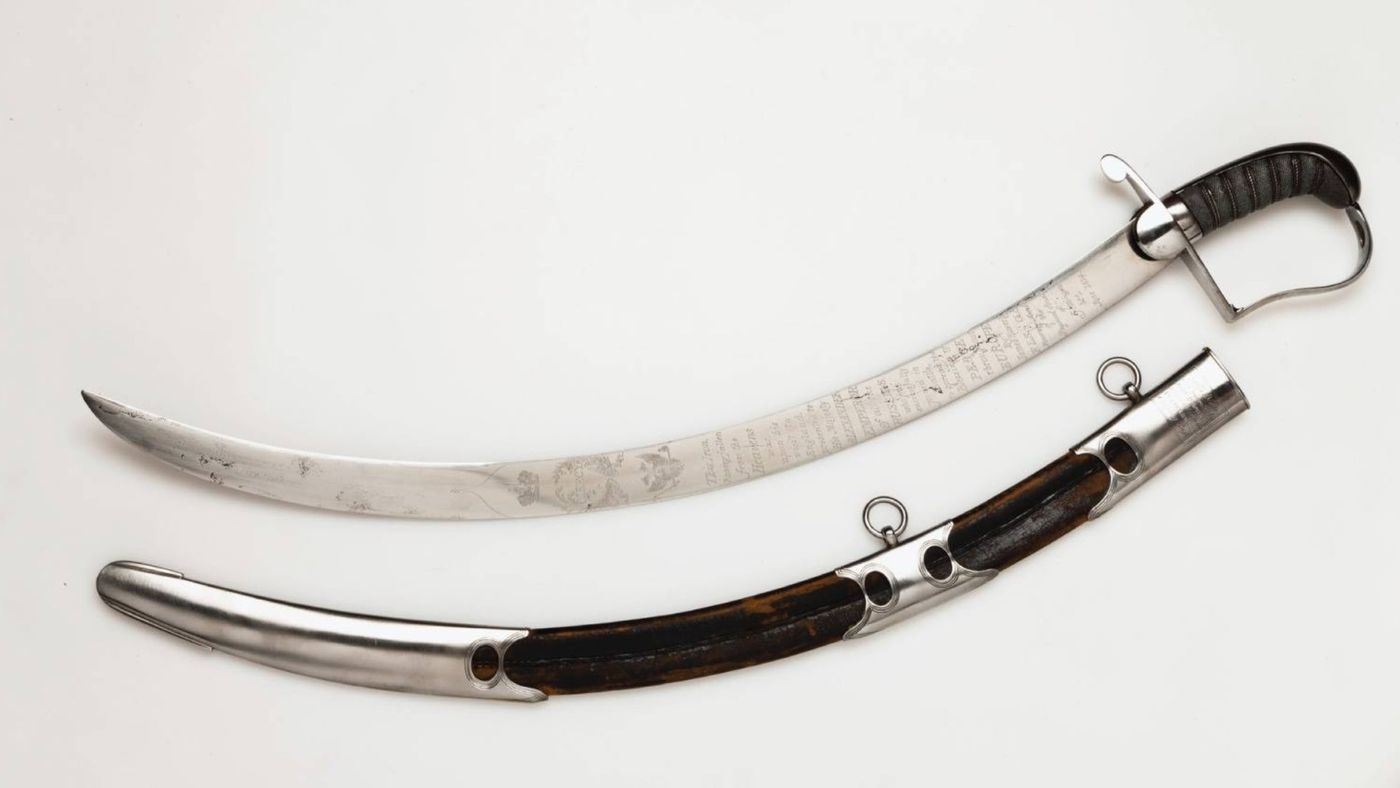Forge legendary swords from sky iron
Dating back far into recorded history, iron making is one of the oldest crafts. But until thousands of years ago, one of the most abundant metals - iron - was virtually unknown. The ancient Egyptians and Sumerians only knew that iron came from shooting stars and considered it sacred, a gift from the gods.

I can't help but fall into reverie. ... In the world of swords and magic, in order to forge powerful magical weapons, there is a rare metal material that can only be obtained from meteorites in the sky, which is the magical synonym of meteorite - "Sky Star Stone".
Later civilizations discovered how to smelt it, making it consistently strong and not brittle. But in ancient times, such as the Middle Ages, iron was a difficult material to produce and therefore only mastered by truly skilled people. The blacksmith came to mind right away, oh no, it's actually our dwarf pals.
What do dwarves do with these rare materials, of course, to make swords. Fortunately, it is not just in fantasy, there are several legendary swords made of meteorite in history.
King's Sword, Kusanagi Sword, Durandal? Of course it's not these big guys, who are they, let's get to know them slowly.
The Sword of Kings is the curry stick used by the legendary King Arthur. Durandal comes from the epic "Song of Roland".
Then again, what exactly is iron? Why is it so difficult to manufacture?
What's so special about stone, iron, or metal?
Let's start from scratch. Why are metals in general, and iron in particular, desirable?
Materials are used based on their properties, both in physical and economic sense. To understand most materials and how they are used, ask three basic questions:
Is it right for the job - does it have strength, elasticity, heat resistance?
Can it be easily shaped into the desired shape?
How much does it cost?
Of the major classes of materials used in the pre-industrial world—stone, wood, clay, metal, glass, and textiles—stone and metal are the strongest and the only ones that can be used for cutting tools and weapons. Stone is fragile, it can only be worked by chipping and chiseling, and when it cracks, it shatters. Metals are relatively ductile and malleable, especially when heated. It can be hammered into shape; if hot enough, it becomes liquid and can be poured into a mold. And when it's under pressure, it deforms via bending or denting, usually as much as possible to keep it in shape, and repairable if it's not available.
From the ancient world to today, metal has lived up to its properties: because of its strength, it can be used as a structural metal to form a car wall or building skeleton; because of its rigidity, it can be used in many tools, including Cutting tools, such as daggers, saws, and other blades; because of its heat resistance, it can be used in cookware or engines. Unlike stone, it can be worked into shapes for all of these purposes.
In prehistoric times, the first widely used metal was bronze , an alloy of copper and tin. Iron, which had to be smelted at higher temperatures, was developed later, but replaced bronze because it was harder, more durable, and more abundant. If you want to understand a metal and its importance to civilization, learn about iron.
Iron can be understood in simple terms: it is strong, tough, and heat-resistant; it can be shaped; and most importantly, it can be easily obtained and manufactured if you have a good grasp of the cast iron method.
how the sword is made
Where does iron come from? How do we make it?
Iron is abundant in the earth's crust, but like everything else in nature, it appears to us in an "inconvenient form". You cannot dig pure iron from the ground. Instead, what you find is an oxidized form of the metal called ore. The common form of iron ore looks like red, rusted dirt - in fact, ore is chemically basically the same as rust (or look at it another way, when iron rusts, it effectively becomes ore.) To get any metal from iron ore, you have to separate that vital metal from oxygen and heat it in a thousand-degree furnace through a process called smelting.
A rare form of metallic iron exists in nature: meteoric iron that falls to Earth from space. Before humans discovered how to make iron, meteorite iron was the only form of metal they knew. Imagine the astonishment of the ancients when a huge rock slammed down from the sky and fell - and then when they tried to chisel that rock and it wasn't as brittle and malleable as the stone. It was inevitably seen as a sacred material, a gift from the gods, and the word iron did roughly translate as "metal from the sky" in some ancient languages.

Let's see what a sword actually made of meteorite looks like.

We have already mentioned swords made of meteorite iron. Is it difficult to have only such a dagger? Is there a real longsword, plus it comes from a prominent background and has a story to match, making it even more noble and legendary?
Of course the answer is yes!
Meteorite Blade of Emperor Jahanji

Jahangir, the fourth emperor of the Mughal Empire, now the meeting point of the Indian subcontinent, ruled from 1605 until his death in 1627. He regarded his leadership as a gift and trust from the gods, and a tribute in the form of precious objects as a sign of his due diligence.
When a meteorite fell to Earth in Punjab in April 1621, local tax collectors ordered the charred earth to be dug up. "The deeper they dug, the hotter it felt," finally they reached where a piece of hot iron was revealed; as if taken from a furnace. After a while it got cold, and the tax collector took it home, sealed it in a packet, and sent it to the palace.
This was also the gift Jahangi received from the gods; he then ordered the blacksmith to smelt it into two swords and a dagger. They mixed melted meteorites with iron to create swords and patterned daggers, which Jahanji said "besides a superb sword, it cuts beautifully".
The original text of this place is "cut beautifully, as well as the very best swords". I really don't know how to translate it properly.
Why only one dagger was left? Where are the other two swords cast by Emperor Jahanji? I didn't find any information about them. Anyone who knows can leave a message for discussion.
The Meteorite Sword prepared by James Sorby for the Russian Tsar

The artist and historian James Sowerby, a very important influence on early meteorite research, houses their collection in his personal museum, open to the public at the back of the Lambeth House in London .
After Napoleon's defeat, the Allies' state visit to England celebrated the ensuing peace. It was at that moment in 1914 that Thorby planned a sword smelted from a meteorite from the Cape of Good Hope to be given to Emperor Alexander I of Russia.
The inscription on the machete reads:
"This iron, which fell from the sky, was given to the Emperor of All Russia, His Majesty Alexander, when he visited England, who successfully fought in the war and spread peace in Europe, James Sorbey FLS GS. Göttingen &c Honorary Member of the Physical Society, June 1814."
However, between the time it took to forge the sword and obtain permission to deliver the gift, Thorby ran out of time - and then the sword was sent to the Russian Minister of State. The emperor did not receive that sword until 1819.
Indonesian Meteor Wave Sword

Kris are known for their distinctive serpentine, sinuous curves - but some blades made in Indonesia are special for different reasons. Around 1750, a meteorite fell near the Prambaram Monastery, breaking into fragments on impact. One of these fragments was taken to the palace of Surakarta in Java, which remains to this day and is considered sacred.
In short, the rest were used by the swordsmiths in weapon forging. Because of the metal's celestial origins, they believed that the blades integrated with meteorites had magical or talismanic properties. Mixed with ground iron and acid-etched², the blade has a Damascus pattern known as pamor. A phobia sword is a noble object, fit for a prince or king.
Interestingly, there is very little evidence of the wave sword being used as a weapon; instead, its role appears to be primarily ritualistic.
So far, the most beautiful is probably the last wave blade, I think his shadow is often seen in many virtual works. The Golden Snake Sword in Jin Yong's "Blood Sword" may be used for reference. Think about it, it has appeared there, yes, the old game called "Legend" also has the "Silver Snake" sword, it is still a rare weapon.
We have already learned about the meteorite iron swords in the above history. In fact, some people are casting meteorite iron swords in modern times. Yoshito Yoshihara, a famous swordsmith from Japan, forged such a sword, the Sky Iron Sword.
To be honest, these meteorite iron swords do not have any strong power, they are only used to show off. If it is about actual combat, I am afraid that it has to give way to the "Damascus Sword" that appears below.
—————————
The main content in this article is quoted from https://rootsofprogress.org/iron-from-mythical-to-mundane,
Then I make a slight modification through my own interpretation and hereby declare.
—————————
- Saima is a Javanese mythological figure who frequently appears in wahyang dramas. Wayang is a puppet show or real dance performance in Indonesia and Malaysia. He is one of the clowns, but in fact divine and very wise. He is the patron saint of Java and is considered by some to be the most sacred figure in the Javanese opera scene.
- Acid etching is traditionally a process in which a strong acid is used to cut open unprotected parts of a metal surface to create a metal etched design. The protected part is generally covered with an acid-resistant wax base.
Like my work? Don't forget to support and clap, let me know that you are with me on the road of creation. Keep this enthusiasm together!
